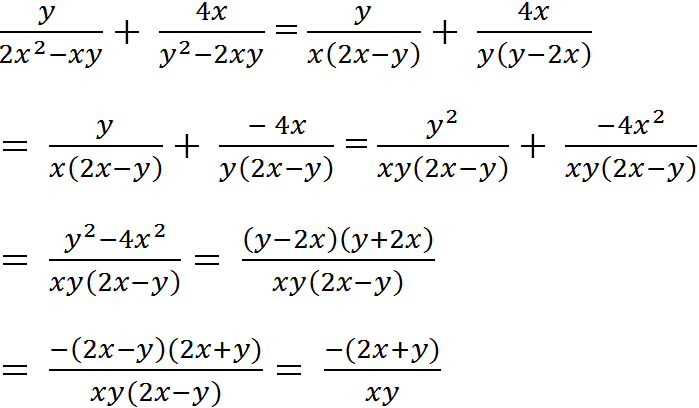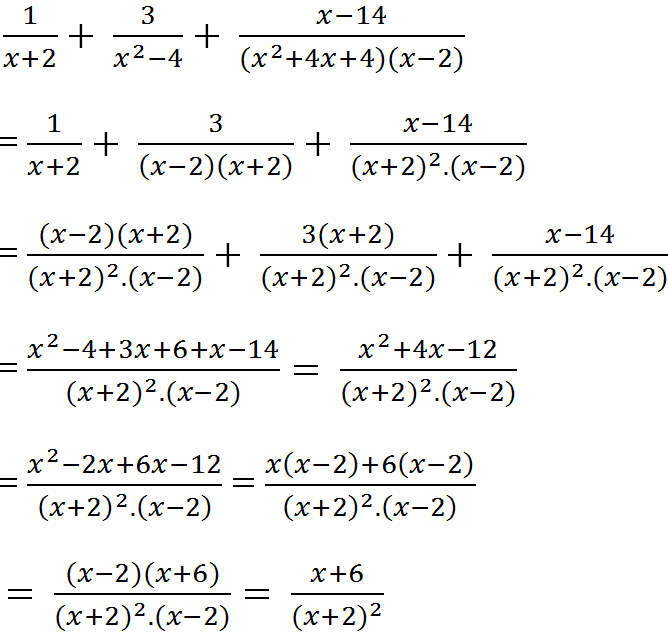Hãy nhập câu hỏi của bạn vào đây, nếu là tài khoản VIP, bạn sẽ được ưu tiên trả lời.

Bổ sung phần c và d luôn:
c, C = \(\dfrac{2}{5}\)
\(\Leftrightarrow\) \(\dfrac{x^2-1}{2x^2+3}\) = \(\dfrac{2}{5}\)
\(\Leftrightarrow\) 5(x2 - 1) = 2(2x2 + 3)
\(\Leftrightarrow\) 5x2 - 5 = 4x2 + 6
\(\Leftrightarrow\) x2 = 11
\(\Leftrightarrow\) x2 - 11 = 0
\(\Leftrightarrow\) (x - \(\sqrt{11}\))(x + \(\sqrt{11}\)) = 0
\(\Leftrightarrow\) \(\left[{}\begin{matrix}x-\sqrt{11}=0\\x+\sqrt{11}=0\end{matrix}\right.\)
\(\Leftrightarrow\) \(\left[{}\begin{matrix}x=\sqrt{11}\left(TM\right)\\x=-\sqrt{11}\left(TM\right)\end{matrix}\right.\)
d, Ta có: \(\dfrac{x^2-1}{2x^2+3}\) = \(\dfrac{x^2+\dfrac{3}{2}-\dfrac{5}{2}}{2\left(x^2+\dfrac{3}{2}\right)}\) = \(\dfrac{1}{2}\) - \(\dfrac{5}{4\left(x^2+\dfrac{3}{2}\right)}\)
C nguyên \(\Leftrightarrow\) \(\dfrac{5}{4\left(x^2+\dfrac{3}{2}\right)}\) nguyên \(\Leftrightarrow\) 5 \(⋮\) 4(x2 + \(\dfrac{3}{2}\))
\(\Leftrightarrow\) 4(x2 + \(\dfrac{3}{2}\)) \(\in\) Ư(5)
Xét các TH:
4(x2 + \(\dfrac{3}{2}\)) = 5 \(\Leftrightarrow\) x2 = \(\dfrac{-1}{4}\) \(\Leftrightarrow\) x2 + \(\dfrac{1}{4}\) = 0 (Vô nghiệm)
4(x2 + \(\dfrac{3}{2}\)) = -5 \(\Leftrightarrow\) x2 = \(\dfrac{-11}{4}\) \(\Leftrightarrow\) x2 + \(\dfrac{11}{4}\) = 0 (Vô nghiệm)
4(x2 + \(\dfrac{3}{2}\)) = 1 \(\Leftrightarrow\) x2 = \(\dfrac{-5}{4}\) \(\Leftrightarrow\) x2 + \(\dfrac{5}{4}\) = 0 (Vô nghiệm)
4(x2 + \(\dfrac{3}{2}\)) = -1 \(\Leftrightarrow\) x2 = \(\dfrac{-7}{4}\) \(\Leftrightarrow\) x2 + \(\dfrac{7}{4}\) = 0 (Vô nghiệm)
Vậy không có giá trị nào của x \(\in\) Z thỏa mãn C \(\in\) Z
Chúc bn học tốt! (Ko bt đề sai hay ko nữa :v)

d. ĐKXĐ: x khác 1, x khác 3
\(\dfrac{x+5}{x-1}=\dfrac{x+1}{\left(x-3\right)}-\dfrac{8}{x^2-4x+3}\)
\(\Leftrightarrow\dfrac{\left(x-3\right)\left(x+5\right)}{\left(x-1\right)\left(x-3\right)}=\dfrac{\left(x+1\right)\left(x-1\right)}{\left(x-1\right)\left(x-3\right)}-\dfrac{8}{\left(x-1\right)\left(x-3\right)}\) \(\Leftrightarrow x^2+2x-15=x^2-1-8\)
\(\Leftrightarrow2x-15+1+8=0\)
\(\Leftrightarrow2x-6=0\)
\(\Leftrightarrow x=3\) (loại)
Vậy pt vô nghiệm

a) \(\dfrac{x}{x-3}-\dfrac{x^2+3x}{2x+3}\left(\dfrac{x+3}{x^2-3x}-\dfrac{x}{x^2-9}\right)\)
ĐKXĐ:\(\left\{{}\begin{matrix}x-3\ne0\\2x +3\ne0\\x^2-3x\ne0\\x^2-9\ne0\end{matrix}\right.\Rightarrow\left\{{}\begin{matrix}x\ne3\\x\ne-\dfrac{3}{2}\\x\ne0\\x\ne\pm3\end{matrix}\right.\)
\(=\dfrac{x}{x-3}-\dfrac{x\left(x+3\right)}{2x+3}\left(\dfrac{x+3}{x\left(x-3\right)}-\dfrac{x}{\left(x-3\right)\left(x+3\right)}\right)\)
\(=\dfrac{x}{x-3}-\dfrac{x\left(x+3\right)}{2x+3}.\dfrac{\left(x+3\right)^2-x^2}{x\left(x-3\right)\left(x+3\right)}\)
\(=\dfrac{x}{x-3}-\dfrac{x\left(x+3\right)}{2x+3}.\dfrac{\left(x+3-x\right)\left(x+3+x\right)}{x\left(x-3\right)\left(x+3\right)}\)
\(=\dfrac{x}{x-3}-\dfrac{x\left(x+3\right).3\left(2x+3\right)}{\left(2x+3\right)x\left(x-3\right)\left(x+3\right)}\)
\(=\dfrac{x}{x-3}-\dfrac{3}{x-3}\)
\(=\dfrac{x-3}{x-3}\)
=1
\(\Rightarrow\) ĐPCM

a: ĐKXĐ: x<>2; x<>-2; x<>0; x<>3
b: \(P=\left(\dfrac{-\left(x+2\right)}{x-2}+\dfrac{4x^2}{\left(x-2\right)\left(x+2\right)}+\dfrac{x-2}{x+2}\right)\cdot\dfrac{x^2\left(2-x\right)}{x\left(x-3\right)}\)
\(=\dfrac{-x^2-4x-4+4x^2+x^2-4x+4}{\left(x-2\right)\left(x+2\right)}\cdot\dfrac{-x\left(x-2\right)}{x-3}\)
\(=\dfrac{4x^2-8x}{\left(x+2\right)}\cdot\dfrac{-x}{\left(x-3\right)}=\dfrac{-4x^2\left(x-2\right)}{\left(x+2\right)\left(x-3\right)}\)
c: 2(x-1)=6
=>x-1=3
=>x=4
Thay x=4 vào P, ta đc:
\(P=\dfrac{-4\cdot4^2\cdot\left(4-2\right)}{\left(4+2\right)\left(4-3\right)}=\dfrac{-64\cdot2}{6}=\dfrac{-128}{6}=-\dfrac{64}{3}\)

ĐKXĐ: \(x\notin\left\{2;-2;0;3\right\}\)
Ta có: \(P=\left(\dfrac{4x}{2+x}+\dfrac{8x^2}{4-x^2}\right):\left(\dfrac{x-1}{x^2-2x}-\dfrac{2}{x}\right)\)
\(=\left(\dfrac{4x\left(x-2\right)}{\left(x+2\right)\left(x-2\right)}-\dfrac{8x^2}{\left(x+2\right)\left(x-2\right)}\right):\left(\dfrac{x-1}{x\left(x-2\right)}-\dfrac{2\left(x-2\right)}{x\left(x-2\right)}\right)\)
\(=\dfrac{4x^2-8x-8x^2}{\left(x+2\right)\left(x-2\right)}:\dfrac{x-1-2x+4}{x\left(x-2\right)}\)
\(=\dfrac{-4x^2-8x}{\left(x+2\right)\left(x-2\right)}\cdot\dfrac{x\left(x-2\right)}{-x+3}\)
\(=\dfrac{-4x\left(x+2\right)}{x+2}\cdot\dfrac{x}{3-x}\)
\(=\dfrac{-4x^2}{3-x}\)
Để P<0 thì \(\dfrac{-4x^2}{3-x}< 0\)
mà \(-4x^2< 0\forall x\) thỏa mãn ĐKXĐ
nên 3-x<0
hay x>3
Kết hợp ĐKXĐ, ta được: x>3
Vậy: Để P<0 thì x>3

\(=\left[\dfrac{2x-3}{\left(2x-5\right)\left(2x-1\right)}-\dfrac{3}{2x-1}-\dfrac{2\left(x-4\right)}{\left(x-4\right)\left(2x-5\right)}\right].\dfrac{2x\left(2x+3\right)-\left(2x+3\right)}{-2x\left(4x-7\right)-3\left(4x-7\right)}+1\)
\(=\left[\dfrac{2x-3-6x+15-4x+2}{\left(2x-5\right)}\right].\dfrac{2\left(x+\dfrac{3}{2}\right)}{\left(-2x-3\right)\left(4x-7\right)}+1\)
\(=\dfrac{-2\left(4x-7\right)}{2x-5}.\dfrac{2\left(x+\dfrac{3}{2}\right)}{\left(-2x-3\right)\left(4x-7\right)}+1\)
\(=\dfrac{1}{2x-5}.2+1\)
\(=\dfrac{2+2x-5}{2x-5}\)
\(=\dfrac{-3+2x}{2x-5}\)



\(A=\left(\dfrac{-\left(x+2\right)}{x-2}-\dfrac{4x^2}{\left(x-2\right)\left(x+2\right)}+\dfrac{x-2}{x+2}\right)\cdot\dfrac{x^2\left(2-x\right)}{4x\left(x-3\right)}\)
\(=\dfrac{-x^2-4x-4-4x^2+x^2-4x+4}{\left(x-2\right)\left(x+2\right)}\cdot\dfrac{-x\left(x-2\right)}{4\left(x-3\right)}\)
\(=\dfrac{-4x^2-8x}{x+2}\cdot\dfrac{-x}{4\left(x-3\right)}=\dfrac{-4x\left(x+2\right)}{\left(x+2\right)}\cdot\dfrac{-x}{4\left(x-3\right)}\)
\(=\dfrac{x^2}{x-3}\)